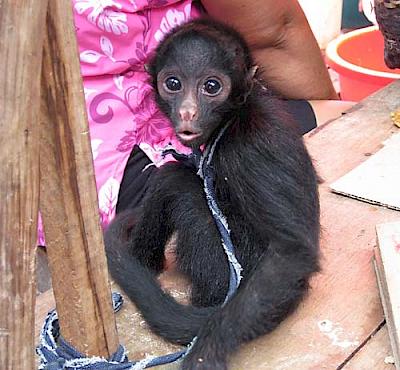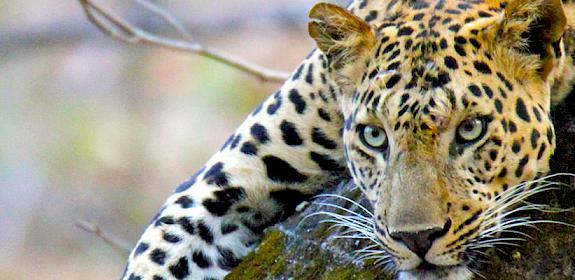Trade threat to primates
Oxford, UK, 21st February 2011—The trade in live primates worldwide involves tens of thousands of individuals per year, with a linear increase in export numbers over the last 15 years, while the trade in dead primates involves an estimated in excess of a million animals a year according to a new study published in Endangered Species Research.

The study forms an overview to a special issue of the open-access journal on Primate Conservation: Measuring and mitigating trade in primates.
According to the overview study by Vincent Nijman of Oxford Brookes University and co-workers, the international trade in live primates peaked to supply demand from the biomedical and pharmaceutical industries in the late 1960s and 1970s—the major exporters then included India (around 50,000 animals per year) and Peru (around 30,000).
During the 1990s, numbers of wild-caught and captive-bred primates traded were roughly equal, but subsequently there was a massive increase in captive breeding. By 2005, around 71,000 live primates were traded internationally, 53,000 of them reported as captive-bred. However, there is some concern over whether all these are truly captive-bred rather than laundered wild-caught specimens.
Since 1995, China and Mauritius have between them supplied more than half of all primates traded internationally (31% and 18% respectively), with the largest importers of live primates the USA (26%), Japan (14%) and China (13%).
“The above figures are from an analysis of legal trade reported to CITES [the Convention on International Trade in Endangered Species of Wild Fauna and Flora], but the true figures are likely to be higher, because of under-reporting and illegal trade,” says Nijman.
Examples of illicit trade quoted in the report include the supply of Long-tailed Macaques Macaca fascicularis from mainland Southeast Asia (Cambodia, Laos, Viet Nam) into China, to supply the booming biomedical trade, while a paper in the special issue by Maldonado and co-workers documents the illicit trade of over 4,000 night monkeys (Aotus spp.) each year from Peru and Brazil into Colombia to supply a biomedical research facility.
CITES figures also document the trade in dead primates and their parts, including almost 20,000 exported as hunting trophies over the past 30 years.
More than 100 primate species have also been recorded as used in traditional medicines, and the issue contains a paper by Starr and co-workers documenting the threat posed to two slow loris species in Cambodia from such trade.
However, the major trade in primates is in those traded domestically for food. A paper by Wright and Priston in the special issue examines what drives such trade in southwestern Cameroon and finds many more primates are sold there for wild meat than are captured for local consumption.
While the main threat to primate species is widely acknowledged to be habitat loss and hunting, trade is recognized as a leading threat to species like the Barbary Macaque Macaca sylvanus and slow lorises Nycticebus spp.
As Nijman et al. note, in 2006, trade was listed as a threat to only one of the world’s most threatened primates species, but four years later, trade for meat, medicines and pets is implicated in the decline of nine of these species.
Other papers in the special issue include one by Chris Shepherd of TRAFFIC Southeast Asia on the Illegal primate trade in Indonesia and he also contributed as a co-author to an article on gibbons in zoos and rescue centres in Indonesia.
“The illegal primate trade in Asia is decimating populations of some of the region’s most charismatic species: tackling such trade should be regarded as an urgent priority for wildlife enforcement agencies in the region,” said Shepherd.
Other topics covered include effective implementation of CITES; the use of forensics in trade; problems, pitfalls, and successes of rehabilitating and reintroducing confiscated primates; and educational and livelihood strategies to mitigate trade.
To access and download the full contents of the issue, please visit http://www.int-res.com/journals/esr/esr-specials/primate-conservation-measuring-and-mitigating-trade-in-primates/




